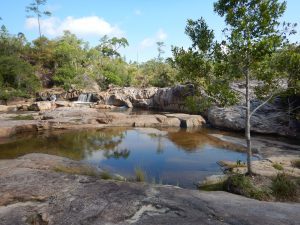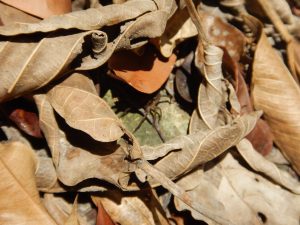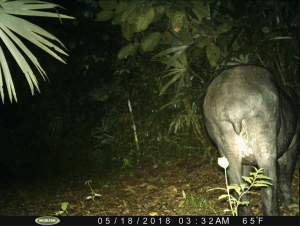Daily Blog Entry 8:
We woke up for a 5 o’clock breakfast today to leave Las Cuevas. I was glad to leave the mites, chiggers, and the constant fear of insects falling on me. However, I was sad to leave the place where I got to become more comfortable with insects, my fellow TFBs, and lowering my standards of hygiene. I fell asleep until we stopped by a general store at Santa Elena before we headed to the Actun Tunichil Muknal (ATM) cave. We got there and left the vans at around 10 o’clock. We swam across a river, walked across another river, and had a 17-ish minute walk to finally reach the cave.
The inside of the cave was incredible. We saw multiple ceramic pieces partially swallowed by the ground, and I couldn’t believe that the artifacts were not harmed by looters or removed by archeologists. The most interesting find were the human sacrifice remains, including the near-intact skeleton at the very end of the cave. The other remain had a very neat skull where I could visibly see the slanted forehead and the remaining tooth.
After we got out of the cave and had lunch, I had a bit of a mishap, but it was all good once I got into the van. We were in the van for about an hour and a half, so I bolted out of the van as soon as we got to the Tropical Educaiton Center (TEC) to go pee. I ran around the TEC trying to figure out where the bathroom is when I saw two different agoutis. That was pretty interesting.
Once we finished eating dinner, we rode on the back of the pickup truck to go to the Belizean zoo. I got a boa constrictor on my neck, and her name is Queen Green. (I am scared of Queen Green) I think the most surprising things were how small Central American jaguars are, how funky the ocelots sound, how strange the gibnut looks, and HOW CUTE TAPIRS ARE. I was ecstatic that I got to pet Indie the Tapir. We could tell that he was very excited by the food we were giving him. I’m just happy that I got to pet them.
Ants. We’re not in Las Cuevas but we’re still not in Glovers, so here’s my taxon mojo:
At the end of the tour of the zoo, we saw a lot of small winged insects on the floor. Scott picked up one of the insects and it was a queen fire ant. The other insects were on their mating swarm as well.




 human remains of Mayan human sacrifice, look up the name of the cave and you will be able to find photos of it. Due to past accidents involving cameras, we were not allowed to bring cameras to take our own photos.
human remains of Mayan human sacrifice, look up the name of the cave and you will be able to find photos of it. Due to past accidents involving cameras, we were not allowed to bring cameras to take our own photos.









